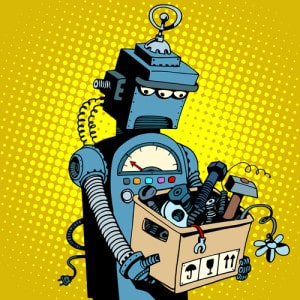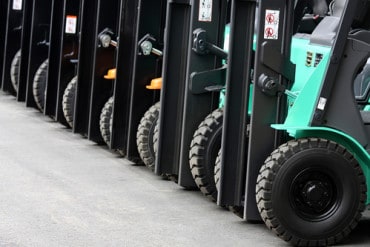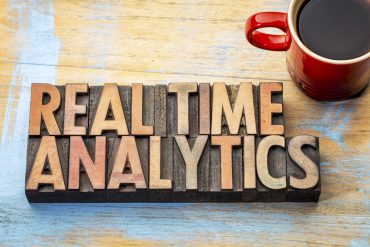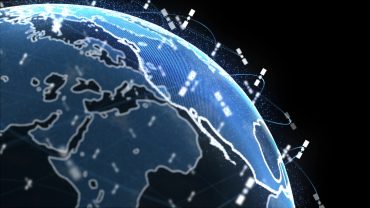
With 400+ IoT platforms in the wild, we should remember that tech markets most always start off with a vertical model. Then they shift to a horizontal one.
Already more than 400 companies offer Internet of Things (IoT) platforms today, turning it into e the latest technology gold rush. Unfortunately, the IoT platform is also a pipe dream.
The story goes like this: he or she who can create a unified platform that helps organizations cut costs by untold millions, curtail greenhouse gases and make a fortune in the process with data will rule!
See also: IOTA Foundation launches data marketplace open innovation initiative
This might sound great in a speech at Davos, but we need only a cursory review of history for a reminder of how this will play out. Technology markets most always start off with a vertical solution or model. Then they shift to a horizontal model. Mainframes were vertical, giving way to minicomputers and, ultimately, to PCs, which are very much horizontal. Or look at the cloud market. We started with horizontal players, but are moving toward specialized vertical industry clouds like Veeva.
So instead of a sleek, unified IoT platform what you’ll see is an “IoT Platform” that looks like you imagined it but instead is a composite pieced together from layers of technology from a variety of companies.
This seeming complexity happens because, well, things are complex. A single large utility might have to monitor more than 25 million meters and other devices. Even a medium-size factory will need to track 100,000 different sensors at once. It’s just too much for one platform to do it all—at the same time. No single system or company can solve every problem.
See also: These IIC testbeds show the future of industrial IoT
In fact, a recent Cisco survey found that 60 percent of IoT projects fail to take flight and that, of projects completed, a third of the companies behind them didn’t consider them successful. In other words, things looked tougher than they looked and different perspectives were needed.
The IoT Platform Gives Way To Layers
So if we’re never going to see a fully functional, efficient IoT platform, what will we see? The answer is a series of layers:
- Devices: This is going to be the Golden Age for embedded computing designers. Raw data (revolutions per minute, temperature, pressure, etc.) will be collected and then shuttled to a gateway or other type of device for local analytics or further processing. A smart mining site can generate up to 2 petabytes per day. Vibration analysis systems can soak up 200,000 or more signals per second. Small devices will be powerful, complex and energy efficient.
- Data Management: Just as enterprise storage systems and operating systems were developed to manage data within networks and data centers, you’ll see the evolution of data fabrics that take the data from hardware and other edge devices and organize it so that it can be used by humans or other software applications. Compatibility will be even a bigger issue than it has been in IT. In IoT, there are hundreds of different data formats in the industrial world to contend with the difficult physical environments, such as extreme heat, deep in the ocean or high vibration, where these devices will live. These challenges mean particular standards and particular standards mean challenges in getting them to sing together.
Speed, reliability and bandwidth costs dictate a hybrid approach blending local and cloud architectures. IDC forecasts that 45 percent of data will be collected, analyzed and stored right where it was generated due to latency and bandwidth issues.
- Analytics: You’ll have “lean in analytics,” i.e., engineers huddled around a computer solving a local problem quickly, and “lean back analytics,” where research scientists go to the cloud to develop new medicines. Your problem will determine where it’s solved. And you’re already seeing specialization. Petasense concentrates on vibration analysis while SparkCognition serves, among others, wind farms. Specialization will occur because analytics vendors will need to understand the underlying markets.
- User Interfaces: Bar graphs are easier to understand than lines of code. The speed of IoT data and the need to send it to different audiences—executives won’t want the same view that engineers will—will prompt a cottage industry.
- Networking and Connectivity: High-bandwidth, fault-tolerant, redundant and highly reliable solutions are required as the pipes through which all the data runs.
- Public Cloud Platforms: AWS, Google, and Microsoft already have and will continue to refine and augment their IoT offerings for those companies that want or need a public cloud solution. But you’ll also see an evolution of specialized services—high availability clusters, solutions for linking product designers and contract manufacturers, elaborate private clouds—that will emerge from them and others.
Of course, just as in the world of IT, in IoT there will be some category-bending. Data analytics will be performed at the data management layer or some analytics companies will provide some data management services. We’re also likely to see the public cloud providers develop their own parts of the IoT environment. Still, the more targeted focus everyone will take will accelerate progress, lower costs and remove roadblocks.
Sure, would a single cohesive system be easier? Yes. But would it be as good? No. Once again, a horizontal model will win out in IoT because it brings out the best in everyone.





























